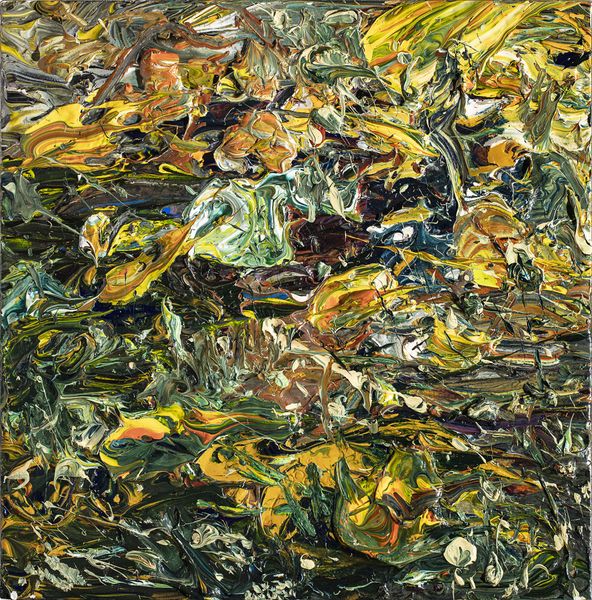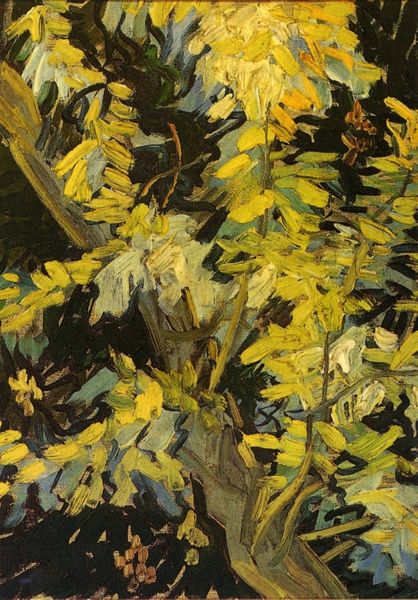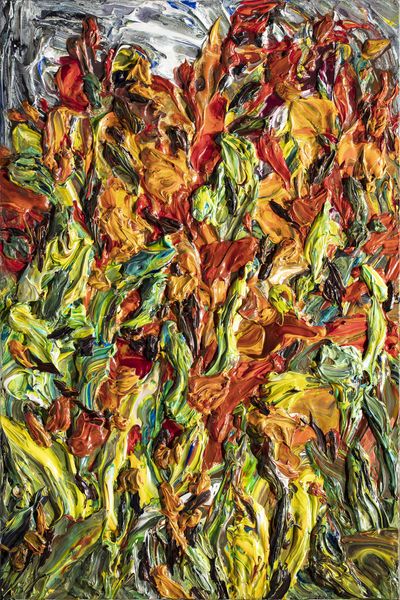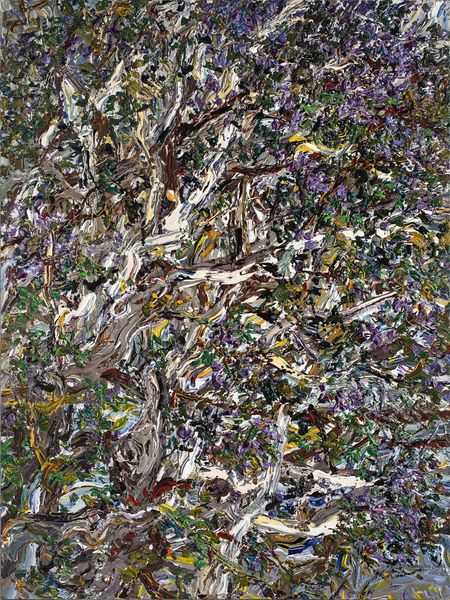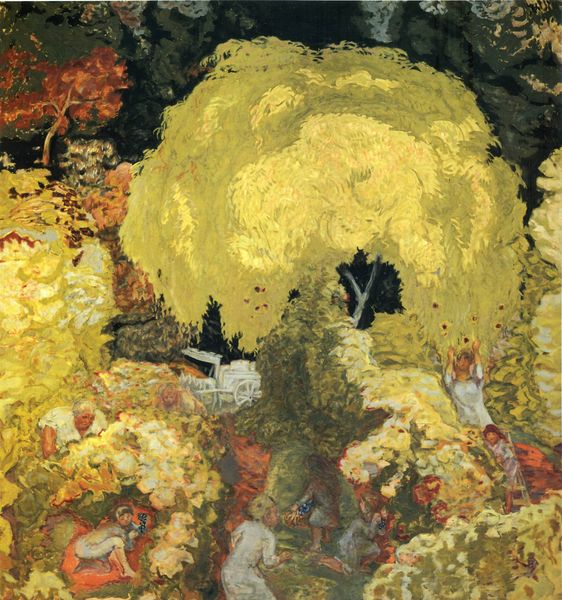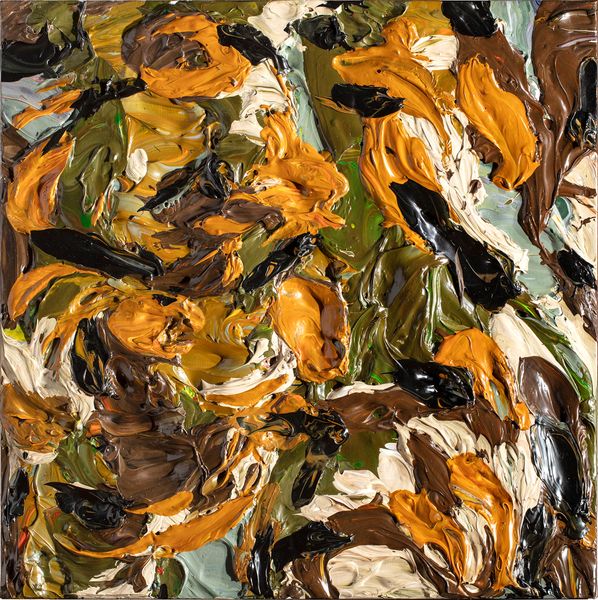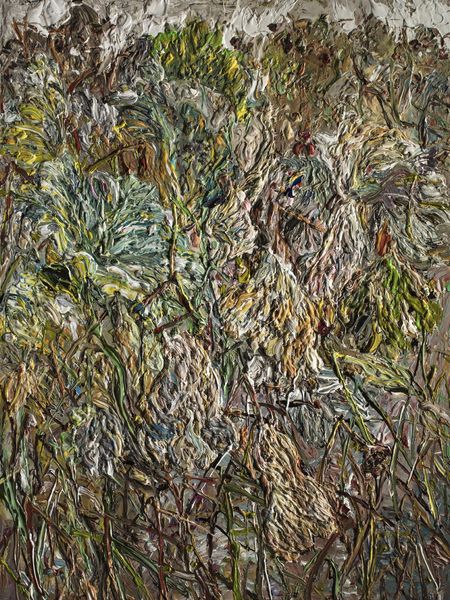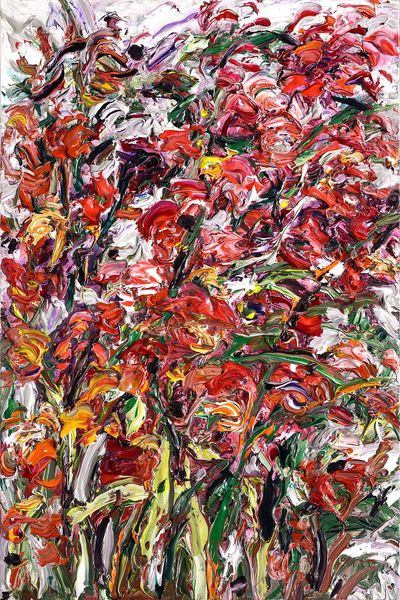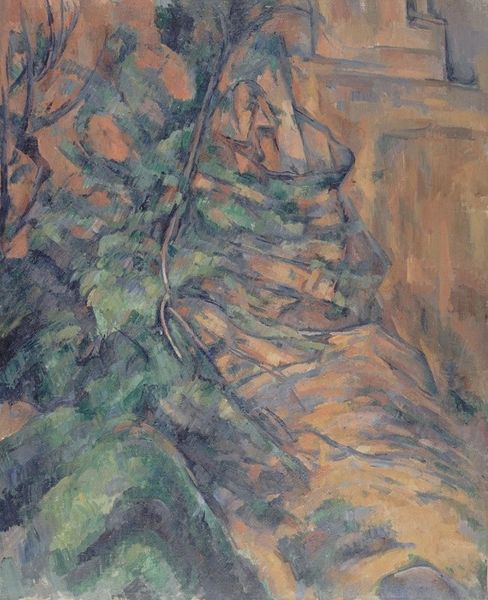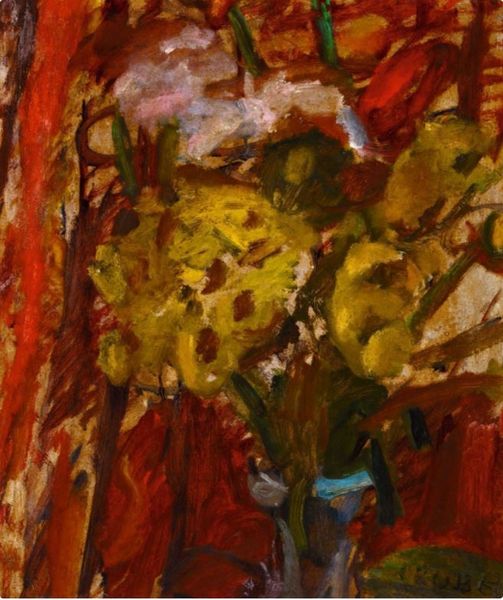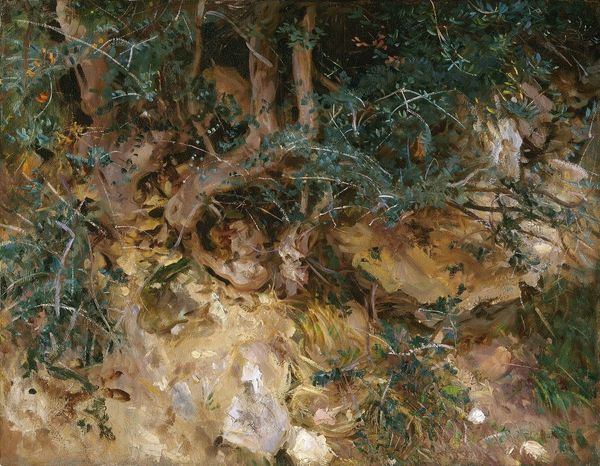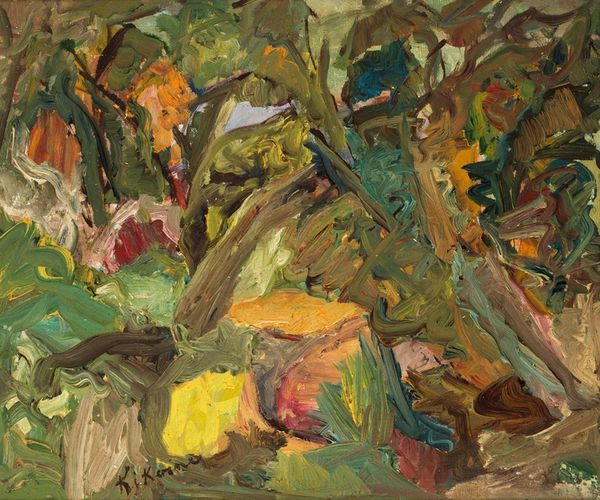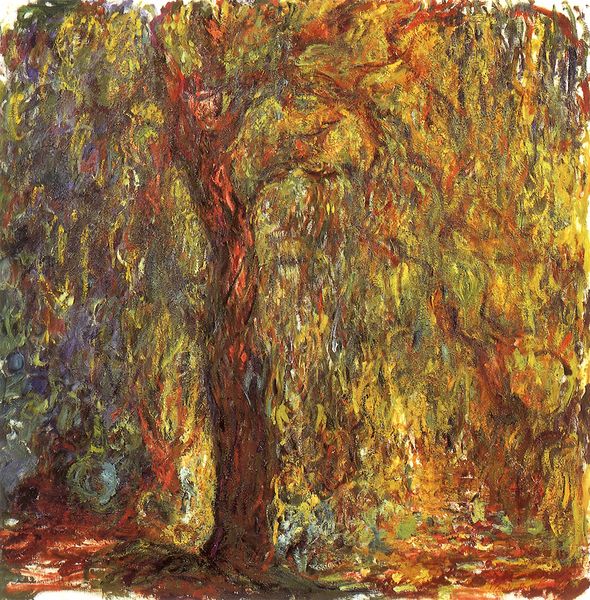
Copyright: Public domain
Editor: Childe Hassam's "Roses," painted in 1895 using oil, is an intriguing little canvas, a floral arrangement that almost vibrates with energy. It's making me feel a little seasick, honestly. What do you make of this almost feverish approach to a classic subject? Curator: "Feverish," that's interesting! Hassam’s roses definitely possess an… excitable quality, wouldn't you say? Rather than meticulous realism, we have pure, unadulterated sensation. This is Impressionism after all, that brief, glorious window when painting moved from factual representation to experiential essence, when light, not lines, described forms. Hassam invites us not just to see the roses but to feel their texture, their warmth, their… well, their rosiness. Don’t you think there’s a story of decay, maybe? Editor: Decay? I hadn’t considered that. The colors seem so vibrant at first glance, all those yellows. Is that intentional then, or does it have something to do with the context around plein-air art that the meta-data has informed me about? Curator: Oh, plein air is definitely relevant! Think of it: the artist dragging their easel outside, battling the changing light to capture a fleeting moment, and racing to depict the effects of this transient state, perhaps before the sun sinks into its rest, which, you know, in floral terms translates to the imminent wither. And perhaps, maybe this urgency, the pressure to immortalize these blooms before they turn inward, gets transmuted into this vibrant, "feverish" energy you detected. You spotted that pearl-like bauble in the composition, correct? Does that read as an imperfection in the mirror or is that something more... like, a memento mori? Editor: Memento mori—so a reminder of mortality, right? Wow, it does give it a different feel now, tinged with melancholy. Maybe beauty isn't timeless, but just on loan. Curator: Exactly. Art making and viewing always requires us to bring an additional understanding of historical and artistic interpretation that exists alongside and separate from pure description of objectiveness! It's the dialogue, right? Editor: Precisely—a dialogue between the ephemeral and the eternal. Food for thought, for sure. Curator: Indubitably. A beautiful reminder, Editor, to pause and appreciate each delicate, fleeting moment.
Comments
No comments
Be the first to comment and join the conversation on the ultimate creative platform.
